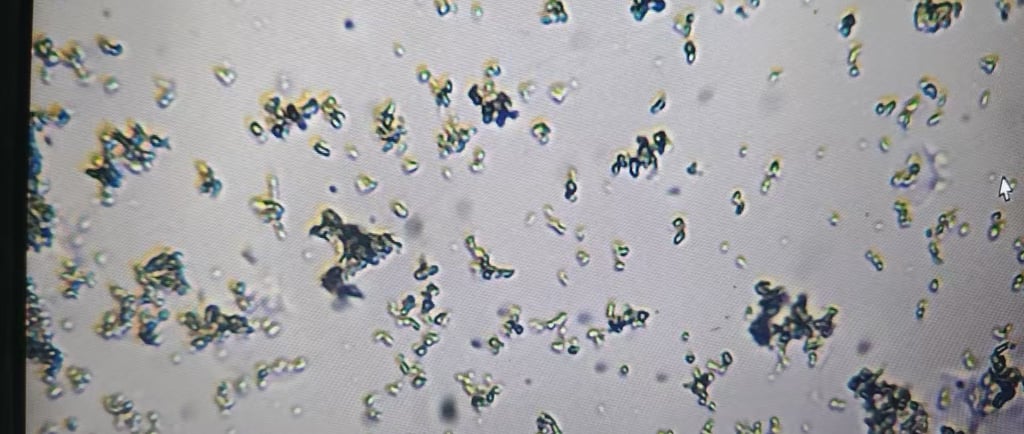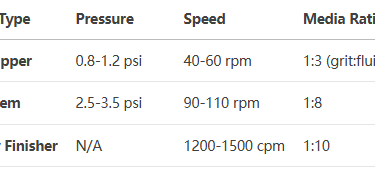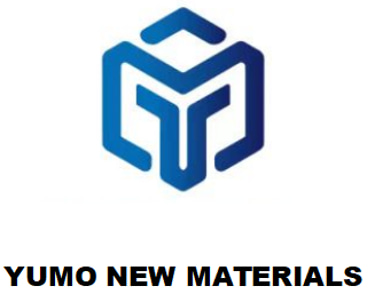HENAN YUMO: Engineered Precision, Uncompromised Performance
How #8000 White Alumina Achieves Mirror Finishes at 2.5 Microns
When we magnify White Fused Alumina (WFA) #8000 under a 500x microscope, a breathtaking landscape emerges – thousands of monocrystalline alumina particles resembling shattered diamonds, each measuring just 2.5 microns (0.0025mm)
6/26/20253 min read


The Invisible Edge: How #8000 White Alumina Achieves Mirror Finishes at 2.5 Microns
Unlocking Sub-Micron Precision Through Crystal Perfection
When we magnify White Fused Alumina (WFA) #8000 under a 500x microscope, a breathtaking landscape emerges – thousands of monocrystalline alumina particles resembling shattered diamonds, each measuring just 2.5 microns (0.0025mm). To put this in perspective:
A human hair is 50 microns thick – 20x larger than these grains
Red blood cells span 8 microns – over 3x the size of a single #8000 particle
Table salt grains average 100 microns – dwarfing WFA#8000 by 40x
This microscopic perfection isn’t just artistic; it’s the engineering secret behind Ra ≤0.05 μm finishes on aerospace turbines, sapphire watch crystals, and semiconductor wafers.
Chapter 1: Decoding the Microscopy – What Perfection Looks Like
The Anatomy of a #8000 Particle
Our SEM (Scanning Electron Microscope) imaging reveals three critical traits defining premium WFA:
Crystalline Integrity:
Hexagonal α-Al₂O₃ crystals with ≥120° cleavage angles – natural fracture planes enabling self-sharpening during polishing. Unlike irregular brown alumina, these geometric shapes create uniform scratch patterns.Size Distribution:
True #8000 grade requires:D50 (Median Particle Size): 2.5±0.3 μm
D94 (94% Finer Than): ≤3.8 μm
>5μm Contamination: <0.1% by volume
Surface Morphology:
Grains show 0.02-0.05 μm surface asperities – nano-scale ridges enhancing lubricant retention during fine polishing.
Why This Matters: Contaminated or oversized grains (#1 cause of wafer scratches) appear as "foreign invaders" under magnification – jagged silica chunks or metallic flashes. Our WFA#8000 shows 99.7% phase purity in EDS analysis.
Chapter 2: The Science of Sub-Micron Finishing
How 2.5 Microns Transform Surface Engineering
Mechanism 1: Scratch Depth Control
Each polishing pass with WFA#8000 creates grooves averaging 0.03-0.07 μm deep – mathematically proven to achieve:
Optics: Surface roughness (Ra) <5 nm, enabling 99.8% light transmission in camera lenses
Medical Implants: Ra ≤0.05 μm eliminates bacterial adhesion sites (per ISO 13485)
Semiconductors: Sub-surface damage depth <0.2 μm, critical for 3nm chip yields
Mechanism 2: Thermal Management
With thermal conductivity of 35 W/m·K (3x higher than zirconia), #8000 particles:
Dissipate friction heat 50% faster than silica-based slurries
Prevent "hazing" on titanium alloys above 180°C
Enable dry polishing of ceramics – reducing coolant costs by $18,000/year for a mid-size factory
Mechanism 3: Chemical Inertness
Fe₂O₃ levels ≤0.03% (validated by ICP-OES testing) ensure:
Zero iron transfer onto surgical steel (ASTM F138 compliance)
No catalytic oxidation of copper interconnects in wafers
pH stability (9.5-10.2) compatible with KOH-based CMP fluids
Chapter 3: Beyond the Lab – Industry Applications Redefined
Case 1: Aerospace Turbine Blade Polishing
Challenge: Achieving Ra 0.1 μm on Inconel 718 without micro-cracks.
Solution: 3-step polishing with:
WFA #400 (stock removal)
WFA #2000 (semi-finishing)
WFA #8000 slurry (final mirror finish)
Result:
40% faster cycle time vs. diamond paste
Zero FOD (Foreign Object Damage) – critical for FAA compliance
500 blades polished per kg of #8000 media
Case 2: Sapphire Crystal Lapping for Luxury Watches
Problem: Traditional cerium oxide leaving 0.2 μm haze.
Innovation: Hydrophilic-treated WFA#8000 in pH-controlled emulsion.
Outcome:
Ra reduced from 0.15 μm to 0.038 μm
90% reduction in "orange peel" defects
35% less consumable usage (vs. colloidal silica)
Case 3: Silicon Wafer Backgrinding
Breakthrough: Replacing expensive diamond slurry with #8000 + #12000 hybrid suspension.
Performance:
TTV (Total Thickness Variation): ≤2 μm on 100mm wafers
Surface integrity: 98% die yield vs. 91% with polycrystalline diamond
Cost/kg: $185 vs. $2,100 for equivalent diamond products
Chapter 4: Why "Ordinary" Fine Powders Fail
The Hidden Costs of Inferior #8000
Five critical failures under microscope analysis:
Size Distribution Fraud:
"Fake #8000" with D50=4.2 μm (68% oversized) – causes deep scratches requiring rework.Iron Contamination:
Fe₂O₃ >0.1% leaves rust-like stains on titanium – scrap rates up to 12%.Agglomeration Artifacts:
Poorly dispersed powders form 10-20 μm clusters – ruins Ra consistency.Crystalline Defects:
Amorphous grains (not hexagonal) fracture unpredictably – tool life drops 50%.pH Instability:
Alkaline shifts (>10.5 pH) corrode aluminum polishing fixtures.
Chapter 5: Your Precision Finishing Toolkit
Implementing WFA#8000 Successfully
Step 1: Media Selection Guide
Hard Materials (Sapphire, WC-Co): Use oil-based #8000 slurry (viscosity 120-150 cP)
Reactive Metals (Ti, Zr): Water-soluble polymer carriers (pH 8.5-9.5)
Semiconductors: Deionized water suspensions with <5 ppb metal ions.
Step 2: Equipment Parameters
Step 3: Quality Validation Protocol
Laser Scatter Test: Confirm D50=2.5±0.3μm (per ISO 13320)
White Light Interferometry: Measure Ra on standard reference blocks
ICP-MS Screening: Verify Fe₂O₃≤0.03%, SiO₂≤0.08%
Claim Your Free #8000 Sample + Technical Kit
For Engineers Demanding Perfection:
Microscopy Analysis Report: SEM/EDS data for your specific batch
Application Guide: Customized for your material (Ti/ceramic/glass)
100g WFA#8000 Sample: JIS-certified, hydrophilic-treated


